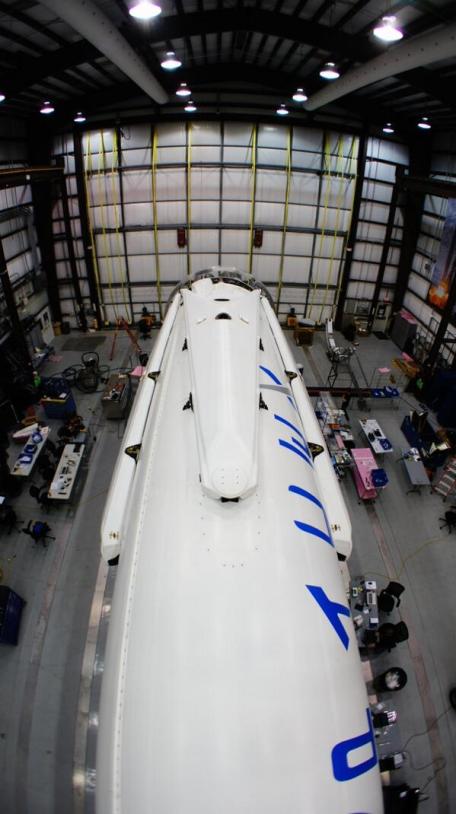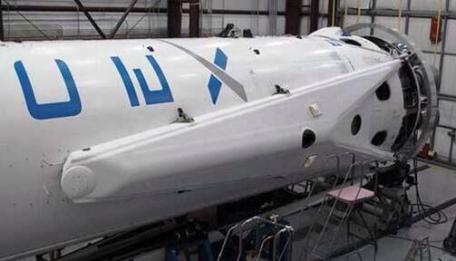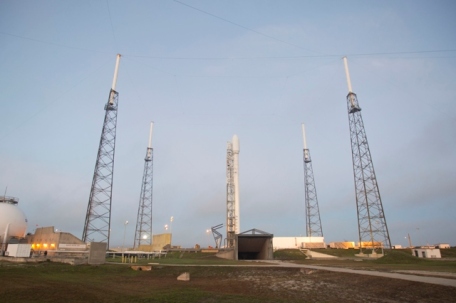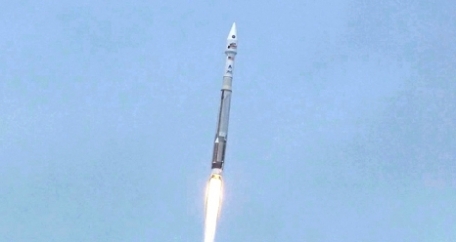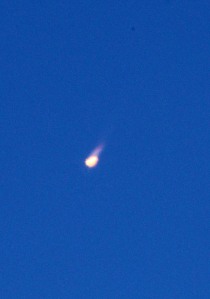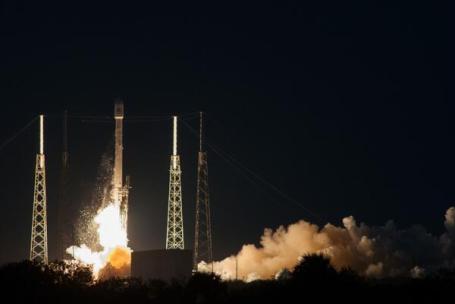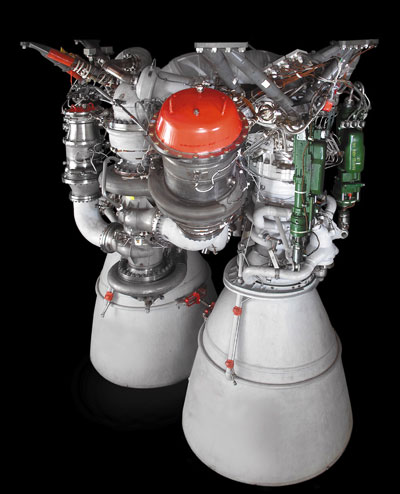
The RD-180
Credit : PWR
According to a report in aerospace industry magazine Space News, a US district judge has denied a request by United Launch Alliance to dismiss the lawsuit levied against the monopoly launch provider by Orbital Sciences Corporation over access to the Russian built RD-180 first stage engine which powers the Atlas V rocket. Unless the case is settled in pre-trial proceedings, it will likely go to trial sometime in late spring.
It is a case filled with ironies, not the least of which is that two US launch companies are actively fighting over a Russian built main engine, in a war of the commons brought on by the fact that the limited supply of Orbital’s original source of much older Russian NK-33 (AJ-26) engines is quickly running out.
This is a problem somewhat of ULA’s own making. At various points throughout the RD-180 saga, which actually began with the Atlas III launch vehicle in 1996, Lockheed Martin argued that even though the engine is currently built in Russia, it had secured the right to initiate US production at any point in time. Such assurances generally tended to come out whenever influential members of Congress or various oversight bodies expressed concern that the United States military was entrusting the control over the supply of high power rocket engines to the same nation which the hyper expensive spy satellites they were launching was spying on. Why sell the capitalists a rope when they are more than eager to buy rocket engines instead?
Lockheed Martin never seriously pursued U.S. production of the engine, a non-decision which otherwise might have substantially advanced the imperiled state of the US launch industrial base which the company cited in its demand for subsidies and the right to form join with Boeing and create the current defense launch monopoly ULA, for which the subsidies have continued unabated.
The basics of the suit outlined by Orbital Sciences are that the original 10 year exclusivity agreement negotiated between Lockheed Martin, Pratt and Whitney Rocketdyne and RD-Amross, the engine’s importer, expired in 2006, a time frame which was more than adequate to allow Lockheed Martin to recoup its investments in bringing the engine to the U.S. It was only after Orbital approached RD-Amross about purchasing the engine for its Taurus II booster, (now Antares) in 2009, and entered into detailed discussions to do just that, that ULA suddenly re-asserted itself and unilaterally extended the agreement for another 10 years, with no other credible purpose than preventing Orbital from entering the market. For its part, Orbital then offered to negotiate for purchase after 2016 when the second agreement ran out as well, only to be informed that it had now been extended to 2018.
Significantly, the RD-Amross import agreement apparently does not restrict the company from selling the RD-180 to all other parties, merely those which might compete with ULA.
Why does this all matter?
For anyone who has been following NASA’s science budgets over the last several years, it has been a very difficult time, with many missions delayed or deferred due to lack of funding. Although it is by no means the only factor, NASA has explicitly cited the rising launch costs of the Atlas-V as a major issue in several recent decisions, including the agency’s withdrawal from the European Exo-Mars missions in 2016 and 2016.
As detailed in the lawsuit, ULA’s decision to cancel the Delta II rocket, and in effect force all medium sized NASA science payloads onto the intermediate class and more expensive Atlas V, all while seeking to prevent Orbital from entering the market with the lower priced Antares, is very detrimental to NASA’s imperiled science budgets. That this is all taking at the same time ULA is still receiving an outright subsidy through its launch capabilities contact only adds insult to injury.
And speaking of injury, Orbital, which wants a jury trial during the course of which the long list of anti-competitive practices outlined in the suit would be put on display, is claiming minimum damages of $515 million and asking for trebling under the Clayton act. The further irony here is that ULA itself was formed in large part when Lockheed Martin used the threat of an anti-trust lawsuit against Boeing to agree to the monopoly creating merger in the first place. The suite was dropped only after Boeing consented.
For Orbital however, the real damages appear to stem from the fact that if the company cannot obtain new powerplants, it will not be able to compete in subsequent ISS commercial re-supply contracts after its current 8 flight manifest runs out, much less penetrate the defense launch market with a booster powered by 40 year old engines suffering from known corrosion issues. The further irony here, and what could be a major source of concern for ULA, is that more than any other factor, the Atlas-V’s much vaunted reliability record, which ULA consistently cites as a justification for high prices, is due to the RD-180. If that Orbital gains access to the engine, arguments against its entry in the defense launch market will be difficult to make, particularly when the second stage motor is provided by fellow defense contractor ATK.
Meanwhile SpaceX, which is coming off a historic first commercial launch to geostationary transfer orbit last week, is potentially only one launch away from meeting a key Air Force requirement before it is officially cleared to compete for a portion of upcoming missions in the Air Force’s Evolved Expendable Launch Vehicle program. That SpaceX is doing so with its own 100% US designed and built Merlin main engines, now in their fourth iteration is significant enough, but what also bears consideration is that the company is actively engaged in developing an entirely new line of engines, Raptor, a methane / lox staged combustion engine which offers many of the advanced features found in the RD-180 that Orbital and ULA are fighting over.
While a jury trial would be fascinating, with the Federal Trade Commission separately investigating ULA over the same issues, don’t be surprised if gets settled rather quickly.


